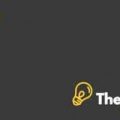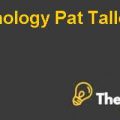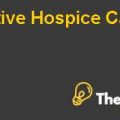
GlaxoSmithKline in China Case Solution
Introduction
GSK was a pharmaceutical company that was first involved in import export business in New Zealand. However, the company made a shift towards the healthcare industry in 1904 and started producing dried milk and baby food, Glaxo. Later the company expanded its business to UK, India, and South America. GSK began producing a pharmaceutical product, a liquid vitamin D product called Ostelin.
In 1947, Glaxo became a public company and continued its expansion through the acquisition of chemical and medical supply subsidiaries. Furthermore, in early 1990s Glaxo established a factory in China and merged with a British pharmaceutical firm, Smith Kline Beecham. Moreover, in 2000 the resulting firm became Glaxo Smith Kline, the world’s largest drug manufacturer. The joint venture resulted in success for both firms and in its initial stages, GSK had global sales of $22.5 billion and employed over 100,000 people worldwide.
GSK has maintained its policy of following ethical standards. All of its employees are trained with regards to code of conduct of GSK and each year their commitment to GSK code of conduct is recertified. The code of conduct entails that its employees have to work with integrity, honesty, and in accordance with all legal requirements. Furthermore, the company’s code recognized that GSK is operating in different countries and under different laws and thus made it clear the employees were expected to obey all local laws and rules. Moreover, GSK ethics policy revolves around its employees have to act with in the legal boundaries of the country they operate in. GSK has maintained strict rules and regulations and has zero tolerance for corrupt policies and business practices. Furthermore, the company’s senior staff is required to receive training that prevents them from indulging in bribery and other corrupt practices. Managers are also responsible to check and ensure that their employees receive training in compliance with ethics and relevant occupational responsibilities.
In 2012, GSK hired 4000 pharmaceutical salespersons in China and its total employment in China was about 7000. Furthermore, the company had established a research and development centre in Shanghai, China. In 2013, GSK collaborated with academic institutions and Traditional Chinese Medicines experts (TCM) in order to incorporate TCM knowledge into new drug development.
Furthermore, several big companies in China were accused of paying bribes in order to increase their sales volumes including, Johnson & Johnson, AstraZeneca, Eli Lilly, Pfizer and Sanofi. All of these companies were under investigation by Chinese authorities for illegal practices. Therefore, Congress passed Foreign Corrupt Practice Act to discourage US business from bribing foreign officials. Moreover, China’s criminal law also contains many provisions against bribery.
Problem Identification
In June 2013, GSK’s headquarter in Shanghai was raided by Chinese police to confiscate documents. Later, the local police officials announced that four GSK employees were under investigation due to their involvement in illegal practices. The four GSK employees were its Vice president and operation manager; human resource supervisor, legal affairs supervisor, and general manager of business development. All of them were Chinese nationals. These GSK employees were charged for paying bribes to physicians, hospitals, and government officials to manipulate GSK’s pharmaceutical sales in China. In addition to this, travel agencies were used to launder money which was given as bribes. 700 travel agencies in total acted as the intermediary to supply cash to doctors, hospitals, and government officials. Moreover, Chinese government also detained other 18 employees and medical staff. Due to this bribery scandal in China, GSK were also under pressure of a possible lawsuit for violating US foreign Corrupt Practices Act. In addition, the company also went under trial for violation of the UK Bribery Act as the firm isbased in UK as well…………………
This is just a sample partial case solution. Please place the order on the website to order your own originally done case solution












